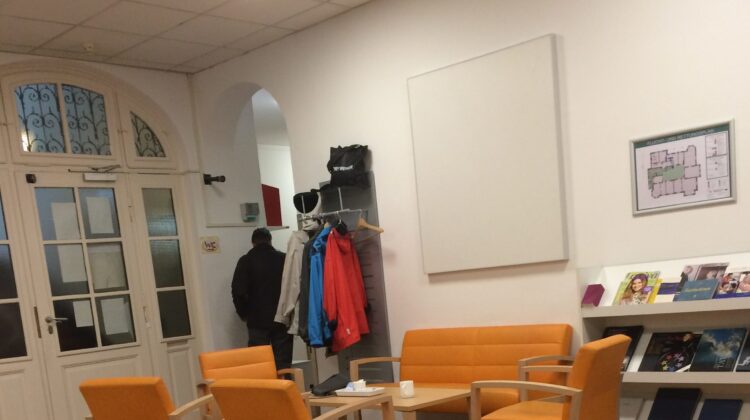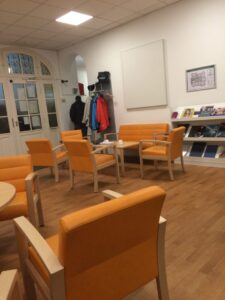
I had the privilege to present a paper at Internoise 2016 based on an intervention study in a dementia clinic in Munich. The study was done in collaboration with Saint-Gobain Ecophon, the Technical University of Munich, the acoustic company PMI and the architect company Dietz Health Care Facilities. Do we have the right standards for elderly care?
The current standard, DIN 18041 – only reverberation time (RT)
The German standard, DIN 18041, suggests the following demands for different types of rooms in elderly care premises:
- Group rooms: RT ≤ 0.64 sec.
- Foyer: RT ≤ 0.69 sec.
- Occupational therapy: RT ≤ 0.63 sec
With the study, we aimed to look into additional acoustic descriptors in these particular room types to secure a good sound environment both for the elderly ear and the patients with dementia. And also for the staff members at the clinic who today have more complex tasks to solve. We chose three different types of acoustic solutions to support the original architecture of the building and to secure optimum room acoustics in regard to the different activities.
Standards for elderly care – Acoustic descriptors

Reverberation time
According to the German standard, we only have to evaluate reverberation time. But the well-known Sabine equation is based on a theoretical condition impossible to obtain in reality – the diffuse sound field.
The typical acoustic solution in a healthcare facility places the absorption material on one surface only (the ceiling). And the decay generally doesn’t follow a straight line according to the theory. But will be split into an early part correlating more or less to the theory, and a late part with a longer reverberation time.
When we measure reverberation time according to ISO 3382-1/2 it is commonly over a 20 or 30 dB range. Starting 5 dB below the initial level and then extrapolating to the full 60 dB range. Starting 5 dB below can be problematic since this part of the decay contains a lot of information! It contains both direct sound and early reflections. They are crucial for the perception of sound AND speech clarity.
Speech clarity
We included descriptors for speech clarity (C50, D50 and STI) together with EDT. And the measurements show that reverberation time and e.g. STI don’t always follow each other. The foyer had shorter T20 and T30 than the occupational therapy. But the occupational therapy had better values for STI.
‘Soft’ results and acoustic descriptors
In addition to the measurements, interviews were carried out together with a questionnaire to see if staff and patients benefitted from the refurbishment . The results were quite clear: They were happy with the changes and rated the rooms better than before.
“The patients were really distracted when doing cognitive tests before the treatment…” – Staff member
“The first two weeks after the acoustic treatment were crazy. We really FELT the change – not only heard it.” – Staff member
When we looked at the measurements we saw that shortest reverberation time didn’t always lead to best speech clarity . Reverberation time was never under 0.5 sec. Even small differences were worth analysing to get the full picture of the room acoustics. The study showed how important it was to include Definition, Clarity and Speech Transmission Index.

Design for the end users
The clients – rooms that are easy ‘read’
Designing for people with dementia AND staff members at the same time IS possible. But we should be more ambitious than ‘just’ following the standard that only includes one descriptor. People with dementia need environments that are easy to interpret first of all. They need rooms that are easy to read because dementia can lead to confusion. And they may lose the ability to accurately interpret what they hear because of hearing loss (simply because of age). And speech clarity HAS TO be evaluated.
The staff – increasing workload requires supportive environments
On the other hand, staff need work environments that are supportive first of all. Within the healthcare sector , and in this case elderly care, the workload is increasing. More patients share less space and several people will therefore speak at the same time in the same room. Good speech clarity is crucial in healthcare facilities in general in order to secure the wellbeing of both patients and staff. This is not done by evaluating reverberation time only.

